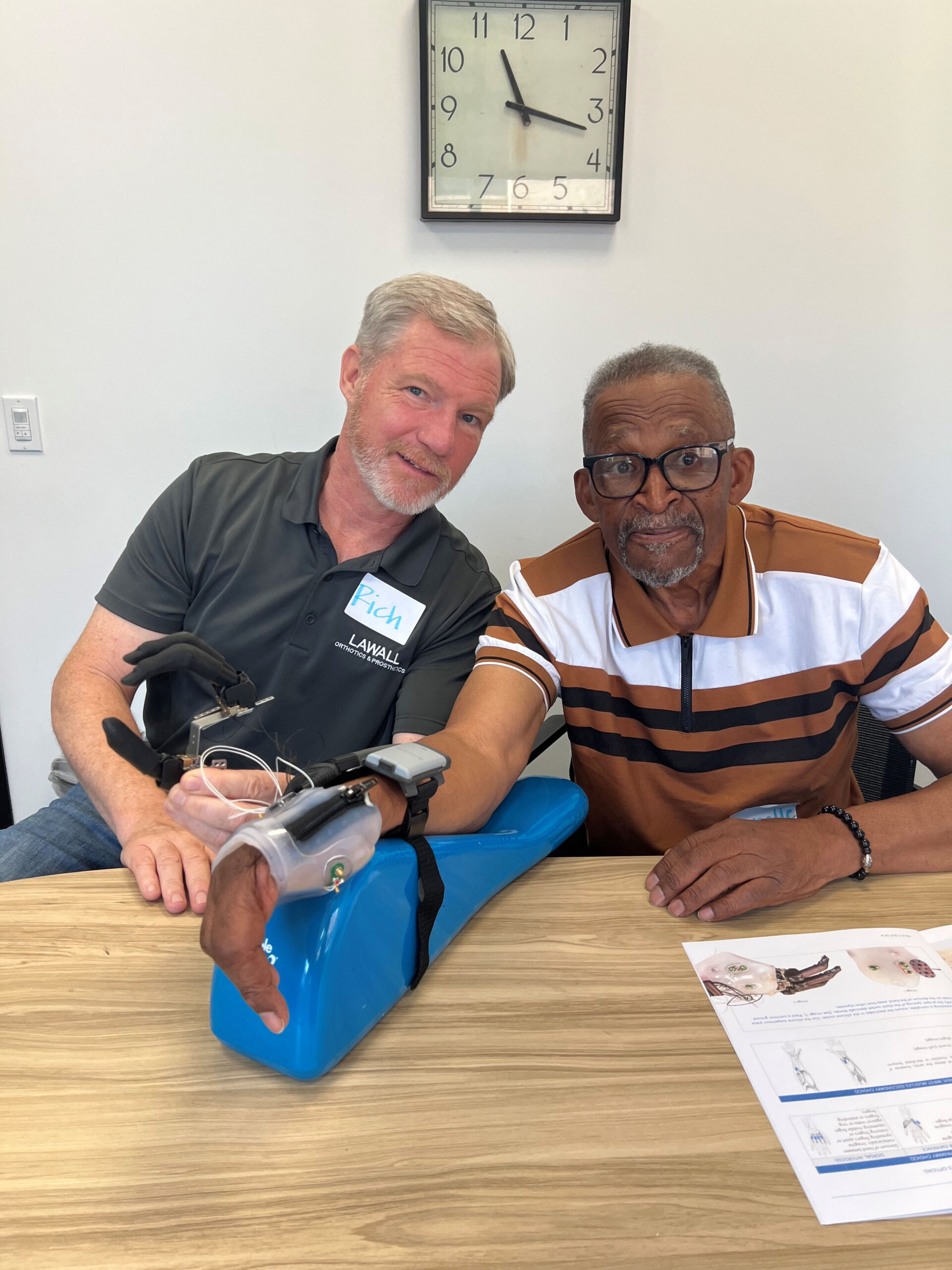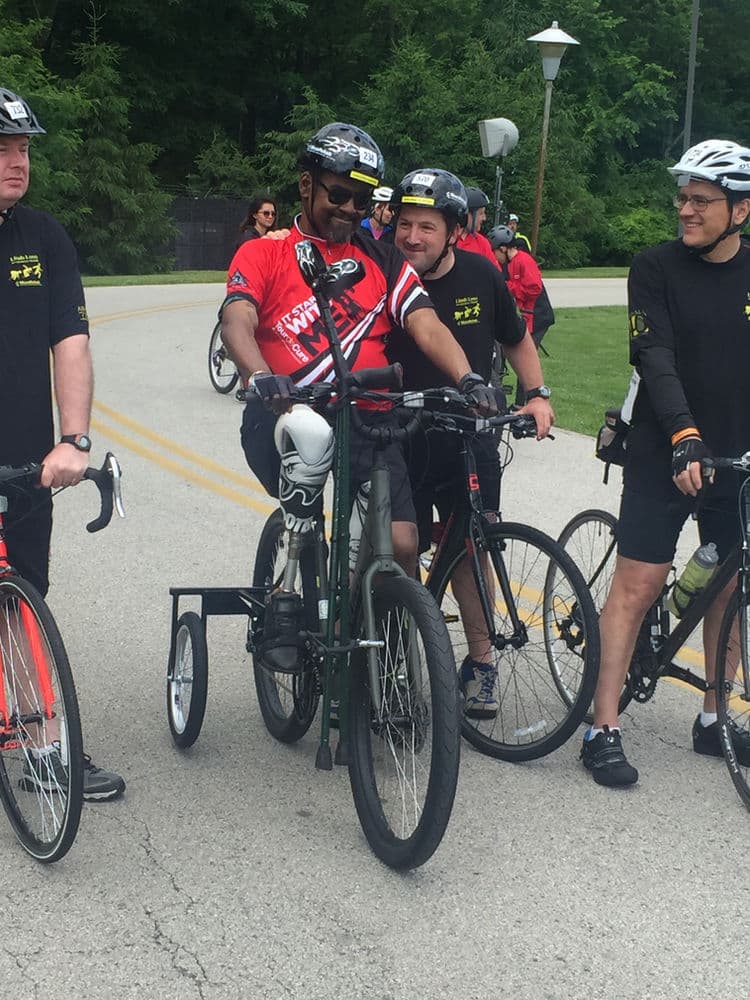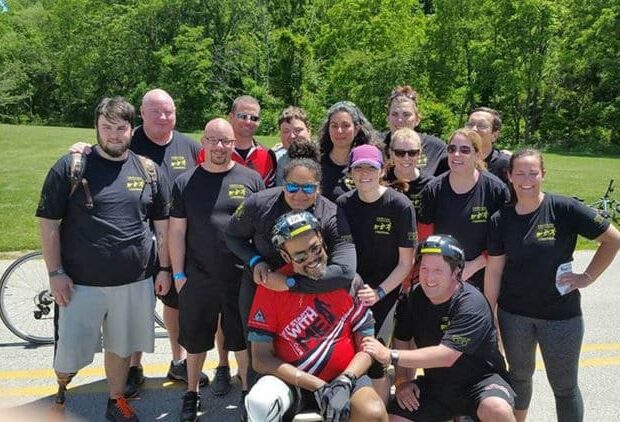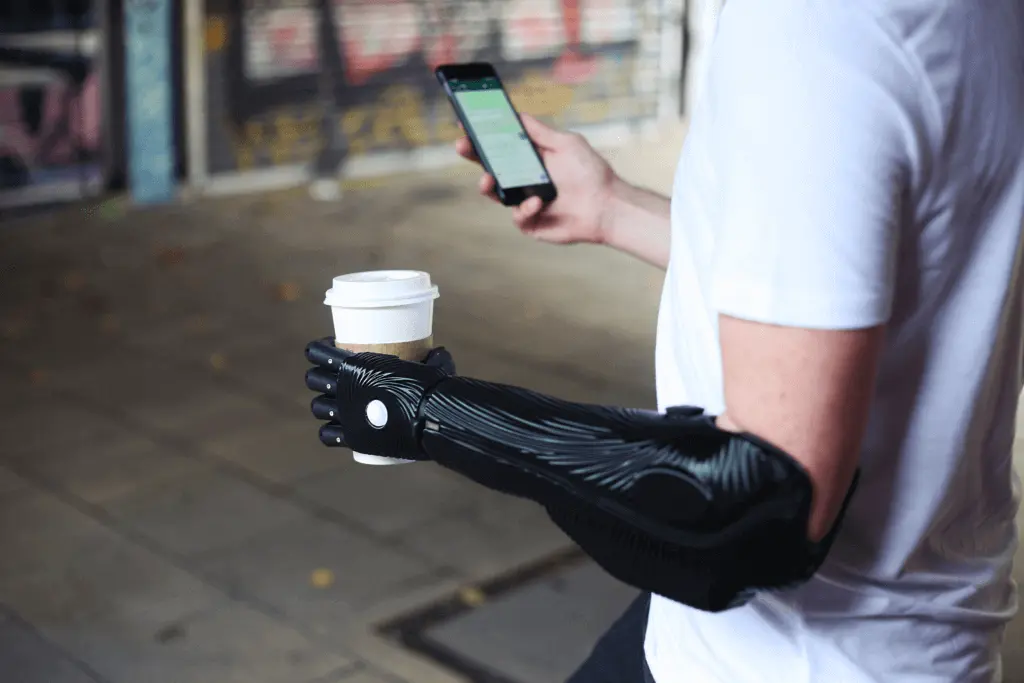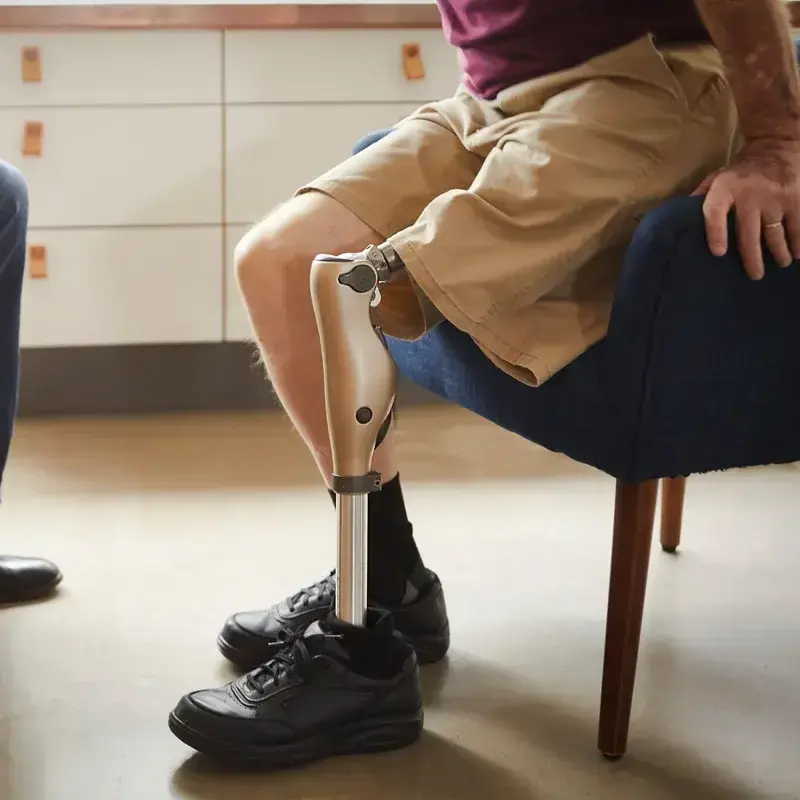“What I should have done is backed out or at least taken the three-mile ride. But a month earlier, I had ordered a mountain bike which they equipped with stabilizers (adult training wheels), which I could ride in an upright position, and could also carry my forearm crutches along. And just before my father died—in one of his last conscious moments—I told him I wanted him to see me ride my bike—and told him I was going 12 miles.
“He smiled and encouraged me, ‘You go, son!’
“After he passed, I got it in my head that I had to keep that promise to him, and thought I could manage to do 12 miles around a track.”
But what Davis didn’t know was that the Tour de Cure courses led through neighborhoods—very hilly neighborhoods, with a lot of traffic on the streets.
And he didn’t know that the bike wouldn’t arrive until two days before the event—so he had no opportunity to practice or train on the new bike—or any other.
Seda-Morales was riding with a few therapists and prosthetists in the 30-mile group; all the remaining therapists, who had not trained, were in the 12-mile group with Davis. Several of them suggested that he might prefer to take the three-mile ride, instead, but Davis was committed.
“He is a very determined person, and stubborn at times,” said Seda-Morales. “That’s why we get along, because we are both so stubborn!”
Because Seda-Morales launched early with the 30-mile group, and was focused on watching for the incoming three mile group, she wasn’t aware till later that Davis was riding with the 12-mile group, and was in trouble.
“My team is the only reason I completed the 12 miles,” he confessed. “Once I hit the first hill, I just could not do it on my own. So the seven members of my team—all but one of whom have been my former therapists—got off their bikes and took turns pushing me! One would scout the next hill, park their bike at the top, run back to the bottom and push me up to the top of the hill, then ride back down the next hill—and they alternated and that’s how we got through,” he marveled.
“Alba met me at the finish line, and I thought she was hugging me, but I think she was really trying to choke me!” he joked. “She was not happy with me, but she was proud of me at the same time.”
He reflected soberly. “I could not have made it without my team,” he repeated. “I was on an emotional high trying to impress a person who was no longer on this side of the life fence; and my team made sure that that happened. I love those guys!”
Davis’ appreciation is shared by others:
“I am fortunate to work so closely with Moss Rehab,” notes Jack Lawall, CPO. “Dr. Wu, Alba and the whole rehabilitation team always work to push patients to their fullest potential. No one ever gave up on Jim. He should be very proud of what he has accomplished!”
Davis’s wife and extended family—multiple cousins and in-laws who are truly ‘family’—were there at the finish line to cheer him, as well.
“One of the reasons I was able to be so stubborn and persistent in rehab in general was because of my family. My wife in particular has been my best friend, my caregiver—every hat fits!—my nurse, and my disciplinarian when necessary. She has pushed, pulled, cajoled, and done everything you can possibly think of to keep me in the right frame of mind and the right attitude. And the rest of my family is right behind her!”
So what lies in Davis’ future now? What new goals has he set for himself?
“My next challenge is to find a job and to get back into the work force. Right now I’m officially retired after 30 years with Verizon, starting out as a repair technician, and ending in the office, maintaining some very expensive switching equipment. Since that door is closed, now, I’m not sure what I’m going to do, but I feel that I am able to work if I can find something that works around dialysis, since dialysis is part of my life.”
Another goal is participation in next year’s Tour de Cure event, for which he plans to train appropriately, well in advance, this time!
Seda-Morales agrees that, with training, Davis can surely manage the 12-mile course.
“There are so many new rules, thanks to him: ‘If you don’t train, you don’t ride!’ We had a long conversation about that,” she laughed.
As far as his prognosis, she is equally optimistic; “For this population (diabetic amputees), it’s very hard because of all the complications and medical issues; but all you need to do is have a goal and we’ll get you there. So if he continues to stay active, if he continues to actually do what he wants to do and ride all the time, I think he can live a very successful life—including being able to get rid of those forearm crutches, too.
“It’s all about being able to just continue with life. Life doesn’t end after an amputation,” she concludes.
Davis has learned that lesson—and another of his goals is to share it with others who may be helped by his example.
“There are amputees who do triathlons and stuff, so I consider myself just ‘Average Joe’,” he said. “But I’d say I’ve gotten back 90% of my independence since I lost my leg and all the related challenges. If I could do what I have done—and I haven’t done that much!— and if I could make it this far—anybody can!
“I can go wherever I need to go, I’m not stuck in my house. I don’t consider myself unable to do almost any job I could have done before; I’m not going to be climbing up any ladders or stringing any phone lines, but I wasn’t doing that, anyway! I was sitting at a desk, and I can still sit at a desk with the best of them!” he quips, laughing.
Inspiration—and humility—come from the examples of others around one, as Davis knows from experience:
“I saw a person in rehab who has no legs, he has no arms. He doesn’t speak English—and he was the most inspirational person I’ve ever seen. This man could out-exercise, out attitude anybody! I don’t even know his name—but just to watch him go from station to station and see the enthusiasm he puts into everything he does, motivates me to do what I do. I figure if this man with no arms and no legs can do sit-ups, push-ups and whatever else he has to do, surely I can get up and walk five steps!”
